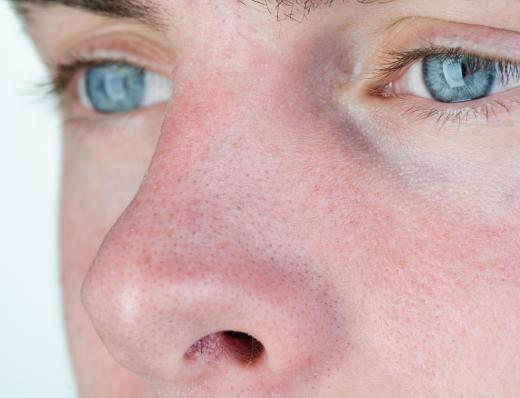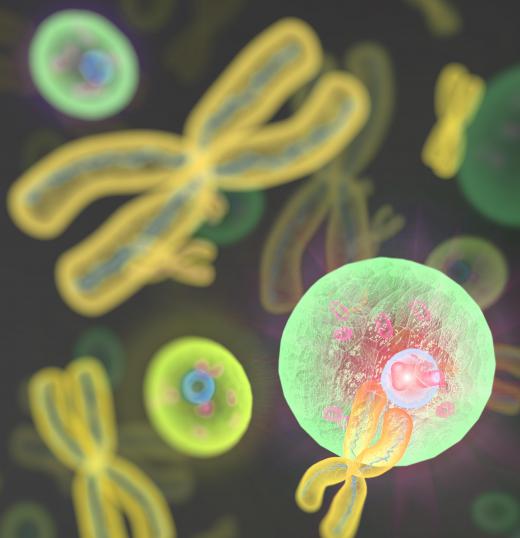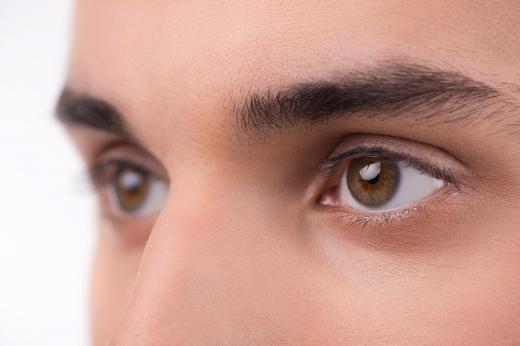What is Homozygous?
 Mary McMahon
Mary McMahon
In genetics, homozygous is a term which is used to refer to an organism which has inherited two identical copies of a gene. For example, if a plant is homozygous for red flowers, it means that it has inherited two copies of the gene which tell it to produce red flowers. For people who breed animals or who raise plants, being able to recognize a homozygous animal is important, as it will allow breeders to bring out desirable traits with careful breeding.
Organisms become homozygous for a trait when they are diploid, meaning that they inherit two sets of chromosomes, one from each parent. Organisms which reproduce sexually, such as humans, are diploid. When the two sets of chromosomes come together, each chromosome in each set has a complementary chromosome in the other set. A pair of chromosomes are said to be homologous, and each homologous pair contains corresponding genetic information, although the content of each chromosome is different because it comes from a different parent.

Each genetic trait can be located at a particular site or locus on a chromosome, and in a pair of homologous chromosomes, there will be two copies of the alleles which code for a particular trait. In homozygous animals, these alleles are identical. Heterozygous animals have two different alleles, in which case only one of the alleles will be expressed. Hemizygous animals have inherited only one copy of an allele, with genetic information missing on the corresponding chromosome.

Genetic inheritance is complicated, and it is rarely as simple as two alleles in a pair of homologous chromosomes, although beginning genetics students are usually introduced to the concept this way. When an animal is homozygous for a trait, the trait can be expressed in different ways as a result of other alleles which have an influence on development.

When an animal is homologous recessive, it means that it has inherited two copies of a recessive gene. People with blue eyes are an example of a homologous recessive. A person with blue eyes will pass the gene down, but his or her child will not necessarily have blue eyes unless the child inherits the blue-eyed gene from the other parent as well. On the other hand, someone who is homozygous dominant for a trait such as brown eyes will have brown-eyed children because only one copy of a dominant trait is needed for the trait to be expressed.
AS FEATURED ON:
AS FEATURED ON:













Discussion Comments
@cardsfan27 - You can predict what traits a child will have assuming both of the parts are homozygous recessive. This would mean that no matter what combination gets sent to the next generation, both alleles will be recessive.
If one of the parents has a known dominant trait, however, there are various probabilities for a child having different traits.
When we had our first child, we went to a genetic consultant to make sure he wouldn't have any problems. She was a great help. There is something called a Punnett square that will help you to predict the various possibilities. In the end, our son came out just fine, and we even had an idea of what he would look like in some regards.
@cardsfan27 - You're in luck. We talked about this the other day in biology. Homozygous offspring end up with the same allele from each parent, but it's decided randomly.
Our bodies have a set of systems designed to mix up what traits we get from each parent. It's called meiosis if you want more information.
I must be homozygous recessive, since I have blue eyes.
We get one of each chromosome from out parents, but how is that decided? Do we get a certain allele from our dad and another from our mother?
Would this mean that there is some way to predict what traits a child will have?
Post your comments